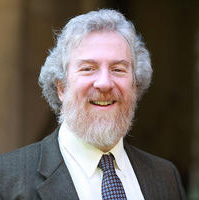On Doubt and Prayer (Part 4): “Soul” of Prayer

In the preliminary section of the morning service, the siddur guides us through some of the most basic concepts of our existence. We ask each day, “Mah anu? Meh chayeinu?” (Who are we? What are our lives?), and I confess that I always wonder if the questions are rhetorical or if they demand from us, each day, an answer. Each day, we also turn to two paragraphs that address the core nature of every human being: the siddur invites us to affirm that we are more than “a body with vessels and glands, organs, and systems of wondrous design” (Siddur Sim Shalom for Weekdays, 4), and presents the challenging, inspiring, and even comforting words, “Elohai neshamah she-natata bi tehorah hi” (My God, the soul You planted within me is pure). Very starkly, the soul is identified as a gift from God, created by God and “breathed into us,” that will one day be taken from the body. Unlike Descartes, who in his Meditations on First Philosophy reflects extensively on where precisely in the body the soul is to be located, the siddur does not deal with this question.
When doubts about the efficacy of prayer assail me, I turn always to these preliminary paragraphs; they do not challenge me to consider if God will heal the sick, or bring peace to the world, or secure a lavish harvest. The challenge becomes more intimate and personal. Do I sense within myself a spark of the Divine, an infinitesimal trace of the Infinite, something human that transcends the corporeal?
Engagement with the world of prayer, with the spiritual life of the Jewish people, is not an “all or nothing” proposition. If we cannot believe it all, it does not necessarily follow that there is nothing to be said. The recognition that we have a soul (neshamah) and that this piece of who we are comes directly from God is no small thing. It plants our identity and nature as something that is not defined by our genome, our wealth, our academic degrees, or our athletic accomplishments.
And if our soul is real, what responsibility do we have toward this part of our self? We nurture the mind through learning, and the body through diet and exercise. The texts of the siddur and the gatherings of our people to daven (pray) are, perhaps, the figurative combination of a school, restaurant, and gymnasium for the soul. Heschel wrote, “It is easy to find people who will teach us to be eloquent. Who will teach us to be still?” The siddur, shul, rabbi, hazzan, and kehillah are all available as “teachers.” The times of “open class” are published by each of our congregations; private teaching is available also.
Kol z’man she-ha-neshamah b’kirbi, modeh ani lefanekha (For as long as the soul is within me, I give thanks to You).
Multimedia links: Elohai Neshamah
Debbie Friedman (z”l) chants her own composition (words slightly changed from the traditional text used in Conservative Movement siddurim).
A classic cantorial setting presented by Cantor Annelise Ocanto (CPE ’11, CS ’12) as part of her senior recital program in the H. L. Miller Cantorial School and College of Jewish Music of JTS.
A haunting melody composed by Rabbi Shefa Gold, here presented by Rabbi Barbara Thiede and Cantor Katya Gohr, recorded during a Rosh Hashanah service.
A setting composed and performed by Rabbi Hannah Tiferet Siegel.
As always, I am interested in hearing comments and reflections on these thoughts about prayer and liturgy. You may reach me at sabarth@jtsa.edu.



